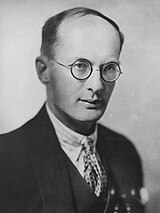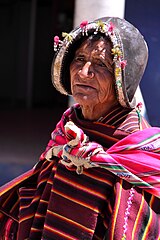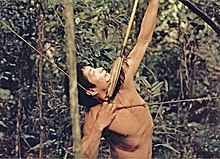Ethnography
Ethnography is a qualitative research method in the social sciences to systematically describe and interpret the culture of various human groups or communities. It claims to be able to decipher the behaviors in terms of their own system of values and beliefs, of the observed culture and to capture the gaze from the social subjects themselves. It seeks to reveal the information in the context in which it occurs. For this, field work is carried out and data collection techniques such as participant observation and open interview are used. The information collected in the field is recorded in a log or record book.
This research method consists of observing the cultural practices of social groups and being able to participate in them in order to contrast what people say (discourse) and what they do (cultural practices). It is the main research technique of social and cultural anthropology. The anthropologist Claude Levi-Strauss considers it even as the first stage of anthropological research. At first this technique was used to analyze aboriginal communities, currently it is also applied to the study of any human group that is intended to know much better.
Definition
For sociologist Anthony Giddens, ethnography is "the direct study of people and groups over a certain period, using participant observation or interviews to learn about their social behavior." Recording a realistic and faithful image of the group studied, field work turns out to be an essential tool.
Ethnographic research attempts to reveal the meanings that underpin the actions and interactions that constitute the social reality of the group studied. This is achieved through the direct participation of the researcher. Frequently, the researcher assumes an active role in their daily activities, observing what happens and asking for explanations and interpretations about the decisions, actions and behaviors. The data collected consists of an exhaustive and detailed description of their customs, beliefs, myths, genealogies, history, language, etc.
In the words of Eduardo Restrepo:
"In a very general way, ethnography can be defined as the description of what people do from the perspective of the same people." This means that an ethnographic study is interested in both practices (what people do) and the meanings that these practices acquire for those who perform them (the perspective of people on those practices). The articulation of these two dimensions is, without a doubt, one of the crucial aspects that help to singularize the perspective and scope of ethnography with respect to other types of description"
Ethnography focuses on the description and interpretation of a social or cultural group, considering their common characteristics, based on aspects such as language, customs, residence, social relationships, behavior, and political or social beliefs. All these elements are observed and examined by the researcher who is immersed in the daily life of this group, so that he can gradually understand the individual and group behavior that prevails, and then collect, order, classify and select the data obtained, grouping them into groups. models, categories or relationships, depending on the study approach.
Jaime Botello states that ethnography is «the lifestyle of a group of people used to living together». Therefore, all types of groups are the subject of study. In this regard, Elsie Rockwell describes that ethnographers enter the field of complex societies through the study of particular situations of daily life, such as: neighborhoods and communities, mental hospitals, prisons, courts, clinics, schools, street corners.
One of the problems that any research faces is defining the type of methodology to be used: whether a qualitative method or a quantitative method. At this point it can be said that ethnography basically uses the qualitative method, since according to certain authors they affirm that when using mathematical or statistical methods there is a risk of oversimplifying the problem, since the person, being part of a system, takes something of it and, likewise, the system is influenced or changed by the individual.
Ethnography has been of great interest in recent years by professionals from multiple disciplines, because it is a method of social research that allows interaction with a specific community, in order to know and record all the data related to its organization, culture, food, clothing, economy and trade. In order for the ethnographer to be able to carry out all types of exploration, documentation is required to help him know how to act and define the research problem. This researcher must have an approach with the study group and can participate openly or covertly to accurately appreciate the life of the people of the community and record the data of interest.
By extension, the term 'ethnography' It is also used to refer to the written work once the field work has been completed. Classic, and in some cases literary, examples are the ethnographic works of Bronislaw Malinowski (The Argonauts of the Western Pacific, 1922) and Edward Evan Evans-Pritchard (The Nuer).
Main features of the ethnographic approach
In a review of the main characteristics of the ethnographic approach carried out by Almudena Cotán Fernández (2020), the contributions of Spindler and Spindler (1992) stand out, who consider that ethnographies must have ten essential characteristics:
- Contextualized observations.
- Hypothesis originated at the time of the study.
- Protracted and repeated observation over time.
- The narratives and voices of the participants must be collected through various ethnographic research techniques, such as observation and interview, among others.
- Explanation of the cultural and social knowledge of the participants.
- The instruments, schemes, codes, categories, which are generated must be created by observation.
- It must be transcultural and comparative.
- You must clarify the implicit for readers: rules, words, behaviors, etc.
- The researcher should not affect the responses of the participants or conduct the interviews under his personal perspective. It must be as neutral as possible.
- Use any material that allows you to collect more information (grabing, camera, etc.).
To these characteristics, others are added, which have been described by Martínez (2008), and which propose to consider ethnography as an attitude towards life and towards the environment that surrounds us, where openness, flexibility and relativity, and whose objective is to adopt "the point of view of the other". It is also highlighted that due to its parallelism with qualitative research, it studies a small number of cases (sometimes only one), but always in detail and depth, which allows it to interpret the meanings and functions fulfilled by the actions of the different actors. social. There are various characterizations for ethnography but one of the most current is the one elaborated by Guber (2011) who proposes ethnography is the set of activities that is usually designated as "field work", and whose result is used as evidence for the description.
Epistemological dimension of ethnography
Gary Anderson (1999) argues that ethnography responds to a postpositivist paradigm that challenges, in the field of Social Sciences, the positivist paradigm, since it puts positivist models in tension, confronting empirical reality.
Advantages and limitations of ethnography
Following Anthony Giddens, ethnography, when successful, provides much richer information about social life than most other research methods. Once we know what things look like from within a certain group, we are likely to gain a deeper understanding of why certain people act in a given way. We can also learn more about the social processes that overlap with the situation we are studying. Ethnography is often considered to be a type of qualitative research, because it is more concerned with subjective interpretations than with quantifiable data. Ethnography also provides the researcher with more flexibility than other methods, allowing him or her to adapt to new and unexpected circumstances and take advantage of opportunities that might arise during the study.
However, fieldwork also has major limitations: only relatively small groups or communities can be studied, and almost everything depends on the ability of the researcher to gain the trust of the individuals he wants to study. Without this capacity, it is highly unlikely that the investigation will succeed. The opposite can also occur, that is, that the researcher identifies so much with a group that by becoming almost a "member" of it lose the perspective that an external observer has of it.
According to Sergio Morales: "It is very dangerous to confuse technique and method, or even worse to believe that ethnography is the method of anthropology, as this causes many anthropologists to use "as a method" to ethnography to carry out research, when, in reality, they do not use any method but rather a technique. For this reason, many anthropological studies are essentially descriptive, because what is a research technique is called a method".
Ethnology and ethnography
It is important to make a distinction between ethnology and ethnography. The Social Encyclopedia of Social Sciences, see also Herder Encyclopedia, indicates that while the first has come to mean the comparative study of documented and contemporary cultures, the second is used to designate the field study of the culture of a tribe or private company. There is a criterion of comparability that "is based on the idea that ethnography is necessary to be able to generate interpretations and explanations, but it is not enough to prove hypotheses, which requires carrying out a comparative study on a representative sample of societies". Which in turn tells us, implicitly, that ethnography is necessary to be able to generate interpretations and explanations, which will later turn ethnology into hypotheses.
Ethnology is a social science and is a branch of anthropology, it carries out studies and comparisons between the different peoples or primitive ethnic groups of the world, mainly considering their cultural manifestations, rituals, beliefs, traditions, government and economic systems. Ethnography is the science that aims to study and describe a particular people or community, meanwhile, ethnology aims to study the similarities or common characteristics of different societies or ethnic groups.
In this sense, ethnology comprises two dimensions of comparative analysis: spatial or intercultural (it can be applied to the study of a single culture -how its cultural aspects relate to each other and to the environment- and to the comparative analysis of various cultures). and the temporal (historical ethnology, commonly called Ethnohistory).
"Ethnographic culture provides the researcher with the elements: material, organizational, emotional, creative, paradigmatic and symbolic that will be used in the study of the particular culture. Geertz's orientations: who conceives anthropology as an interpretive act; The object of investigative attention of the researcher must be placed on the cultural framework: the institutions, actions, expressions, images, events and customs that through ethnography register each and every one of the cultural elements that appear directly in social events; means by which cultural forms are represented. The investigative inputs are obtained through the observation of social phenomena, to later make the ethnological leap; that is to say: compare with other similar phenomena and interpret the underlying meanings".
Life Stories
One of the tools ethnographers use to collect data is life histories. Ethnography uses stories similar to those used in in-depth interviews. It begins with giving the informant confidence to create a relationship of empathy. They are "face to face" between researcher and informant.
These stories will help determine the culture of a people. Many of these are stories that are passed orally from generation to generation, they are traditions that are taught from person to person. Myths and religious beliefs are part of the beliefs that are transmitted orally. Cave paintings are an example of the myths and beliefs that were transmitted through drawings.
Today we receive stories through different media or sources, for example: biographies, autobiographies, letters, diaries, personal documents, among others.
Technical vocabulary
- Etic: Vision of the devoid observer of previous knowledge in the observed (deductive).
- Emic: Vision from within the observed (inductive).
- Practices: Precise and analytical facts within a culture or community.
- in situ: The description of the locality, as is physically this environment (it is mentioned the day and time the investigation took).
- Direct speech: Reproduction of the informant's words literally or transcribed thoughts of the way they originated.
- Indirect speech: Paraphrase of what the informant mentioned; it may also include ideas and elements that were not on the original quote, however, is an understanding or judgment of the ethnograph.
Hunter-gatherer ethnography
In the study of these primitive peoples, Ethnography was applied to ideographic analysis, which provided accounts of these peoples and their social life. The difference between Ethnography and Prehistory is that Ethnography derives its knowledge from observation and from direct contact with the investigated people, on the other hand, Prehistory derives its knowledge from the elements that are dispersed.
Process to follow when doing research
The first thing the Etic does when starting his field work is to "Observe", he always uses his five senses. You need to thoroughly study everything around you. Proceed to "Describe", he will mention what he perceived during the observation. Will collect it for the future. Finally the "Analysis", where he describes what he did through the investigation.
Current Culture
Photography and film have been one of the most beneficial inventions for ethnographers. Since the end of the 19th century, anthropology and all its branches used both photography and cinema in their fieldwork. It was much easier for social researchers to collect images with the help of these inventions. The images speak for themselves. We can better perceive what we are investigating and transmit it at the same time.
Large companies dedicated to making educational documentaries use photography and film as the main means to document their research in the field. We can mention as an example: National Geographic, PBS, History Channel, Cultural.es, among many.
The Metropolitan Savage is a book written by anthropologist Rosana Guber, in 2005. She talks about the experiences of some anthropologists such as: A. R. Radcliffe and Bronislaw Malinowski. She explains that: "prolonged fieldwork does not start and end with those two anthropologists, but when they return to England, that practice continues and takes hold."
Cinema, more than an instrument of ethnography, has become a reflective medium where its role is reconsidered. For example, Ben Russell, an American filmmaker, defines ethnography as "knowledge of oneself through the objective recording of someone who is not oneself", positioning it on the other side of psychedelia, which would be &# 34;knowledge of oneself through a subjective experience of the world" (He said so in a face-to-face workshop at the Centro de Cultura Digital in Mexico City, but in an interview for BIEFF the BLOG he talks about these ideas). These two fields are then combined in a methodology and a type of film production which Ben Russell calls psychedelic ethnography: "Psychedelic ethnography is a methodology, it is a means to an end. It couples the visceral subjective charge of psychedelia with ethnography's claims to an objective understanding of the/a self". This redefinition makes sense from the idea that the study of another culture is fundamentally a knowledge of one's own culture, since the ways of describing that other culture resort to the forms of representation (visual, linguistic, etc.) of the culture itself.
Ethnography by country
- Ethnography of Bolivia
- Ethnography of Israel
- Ethnography of Indonesia
- Ethnography of Haiti
- Ethnography of Trinidad and Tobago
- Ethnography of Rwanda
Contenido relacionado
Hynniewtrep
Brain drain
Comrade




